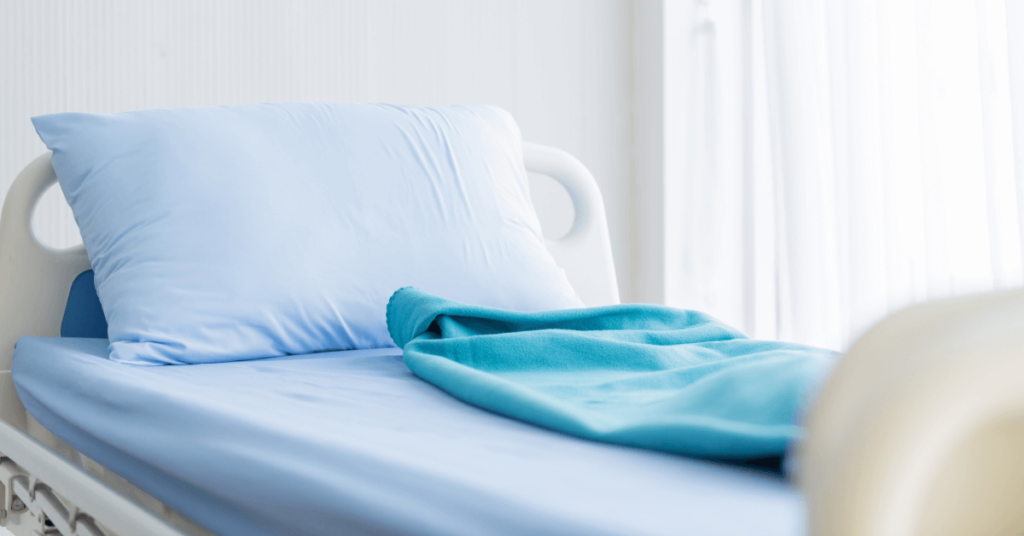7 Reasons Why a Hospital Bed Could Be a Good Investment for Improved Home Care of a Loved One
Sunday, December 15th, 2024, 12:15 pm , Posted by MED +
When caring for a loved one at home or managing your own health condition, creating a comfortable and functional environment is essential. A hospital bed, often thought of as something exclusive to medical facilities, can be an incredibly valuable investment for home care. These specialized beds are designed to offer comfort, safety, and ease of care that traditional beds simply can’t match. In this blog post, we’ll explore seven reasons why a hospital bed could be a good investment for proper home care.
1. Improved Comfort for Extended Use
One of the main benefits of a hospital bed is the comfort it provides for long periods of use. People who are bedridden or require extended rest can experience discomfort and fatigue from lying flat on a regular mattress. Hospital beds allow for customizable adjustments that can improve comfort levels, such as adjusting the head or foot of the bed to a more natural position.
This customization helps alleviate pressure points, reduce discomfort, and improve sleep quality. For individuals with chronic conditions, such as arthritis, or those recovering from surgery, the ability to adjust the bed can make a significant difference in overall comfort, reducing the risk of sores and fatigue.
2. Enhanced Safety and Fall Prevention
Falls are a leading cause of injury for people who have limited mobility or are bedridden. Traditional beds may not offer the necessary support to keep someone safe. Hospital beds are designed with built-in safety features, such as adjustable heights and side rails, which help prevent falls and provide better security for those in need of assistance.
Hospital beds can be raised or lowered to a suitable height, reducing the risk of injury when transferring in and out of the bed. Some models also have side rails that can be raised to keep the patient secure. These features help caregivers provide better support and give individuals more independence while reducing the risk of accidents.
3. Better Positioning for Medical Needs
Hospital beds are designed to offer precise positioning that may be necessary for medical treatment. Many health conditions, such as respiratory issues, heart problems, and digestive disorders, benefit from specific positions that ease symptoms or improve circulation.
For example, elevating the head of the bed can help patients with breathing difficulties, such as those suffering from sleep apnea or COPD. Likewise, elevating the legs can improve blood circulation, which is helpful for individuals with mobility issues or those recovering from surgery. These adjustable settings allow for optimal positioning that a traditional bed simply cannot offer.
4. Easier Caregiving for Family and Professionals
Caring for a loved one who requires assistance can be physically demanding. A hospital bed can make caregiving easier and more efficient, reducing the strain on family members or caregivers. The ability to adjust the height of the bed means caregivers can work at a more comfortable level, whether that’s bending over or standing next to the bed.
For caregivers, this means less bending and lifting, which can prevent strain and injury. Additionally, hospital beds offer easy access for administering medical treatments, changing dressings, or helping with personal care tasks. This accessibility reduces the need for patients to be moved from room to room or repositioned constantly, making caregiving more manageable and less stressful.
5. Support for Post-Surgery and Injury Recovery
Recovering from surgery or a significant injury often requires a special environment that supports healing. A hospital bed offers features that promote optimal recovery by providing a comfortable, adjustable sleeping surface that can be adapted to a person’s needs as they heal.
For example, after hip or knee replacement surgery, patients may need to keep their legs elevated to reduce swelling and improve blood circulation. Similarly, individuals recovering from back surgery might benefit from a position that keeps their spine properly aligned. Hospital beds allow for these adjustments, promoting faster healing and better overall recovery.
6. Improved Hygiene and Maintenance
Maintaining proper hygiene is critical for individuals who are immobile or bedridden, as it can prevent infections and promote better health. Hospital beds are designed to make it easier to manage hygiene, as they can be adjusted to allow for easier access during cleaning and personal care tasks.
For example, patients can be positioned in a way that makes it easier for caregivers to perform activities like bathing, changing sheets, or repositioning to prevent bedsores. Many hospital beds are also designed with materials that are easy to clean, further enhancing the ability to maintain a hygienic environment. These beds can make it simpler for both the patient and the caregiver to maintain cleanliness, helping to prevent infections and improve comfort.
7. Long-Term Investment in Health and Comfort
Although the initial cost of a hospital bed may seem higher than that of a standard bed, it is important to consider the long-term benefits it provides. A hospital bed is an investment in the health and comfort of a patient and can reduce the likelihood of complications related to poor positioning, improper care, and discomfort.
By improving the patient’s quality of life, preventing falls, and making caregiving easier, a hospital bed can actually help reduce healthcare costs over time. Fewer trips to the hospital, fewer injuries, and better overall health management can save money in the long run, making a hospital bed a worthwhile investment for many households.
Conclusion: A Wise Investment for Quality Home Care
A hospital bed is more than just a piece of furniture—it’s a crucial tool for enhancing the comfort, safety, and well-being of individuals in need of long-term care. Whether it’s helping to manage medical needs, providing comfort during recovery, or making caregiving easier, a hospital bed can significantly improve the home care environment.
By offering adjustable positioning, improved safety features, better hygiene, and enhanced comfort, hospital beds support both patients and caregivers in a way that traditional beds cannot. If you or a loved one requires home care, investing in a hospital bed can help ensure that the care provided is as efficient, safe, and comfortable as possible. At MED+ Medical Equipment Distribution Inc., we offer a variety of hospital beds and home care solutions designed to meet your specific needs, ensuring better care and a higher quality of life for all.
Browse Blog Topics
- MED+ Partners with Holmes on Homes: Building a Legacy
- 7 Reasons Why a Hospital Bed Could Be a Good Investment for Improved Home Care of a Loved One
- 8 Ways to Make a Home Wheelchair Accessible
- Walkers vs. Rollators: Which is Right for You?
- 5 Ways MED+ Works with Occupational Therapists to Enhance Mobility & Accessibility for Patients





